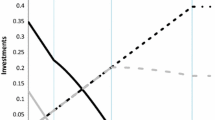Abstract
A theory of justice for the basic structure of society may constrain though not directly govern colleges. The principle of "equal opportunity" commonly applied to jobs either does or does not apply to varsity opportunities. If it applies, it interdicts sex discrimination but, one fallacious argument notwithstanding, it states no obligation to expend resources on new teams. If it does not apply, an analogue of Rawls's difference principle may appropriately constrain inequalities between the sexes. In either case the preferences of a majority of the sex affected by any inequality are pivotal in fashioning any tenable distributive policy. Those preferences are neglected by a government policy that assimilates equal opportunity to equality of (i) the ratio of male:female varsity athletes and (ii) the ratio of male:female students. It is argued that such policy rests on affirming the consequent. Its effects include misallocations of resources and overvaluation of athletics. It is argued that what should approximately be equal is competitive access, the ratio of available positions to aspirants, for each sex. Two versions of a principle of equal competitive access are proposed, the recommended one of which pertains to teams whose net consumption of resources is positive.
Similar content being viewed by others
Rights and permissions
About this article
Cite this article
Guenin, L.M. Distributive Justice in Competitive Access to Intercollegiate Athletic Teams Segregated by Sex. Studies in Philosophy and Education 16, 347–372 (1997). https://doi.org/10.1023/A:1004970219413
Issue Date:
DOI: https://doi.org/10.1023/A:1004970219413




